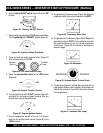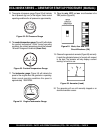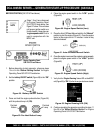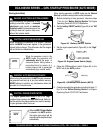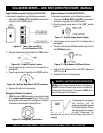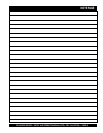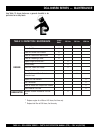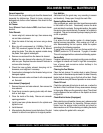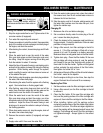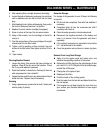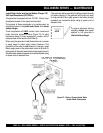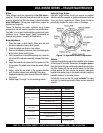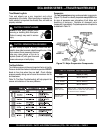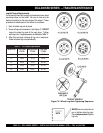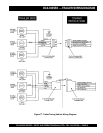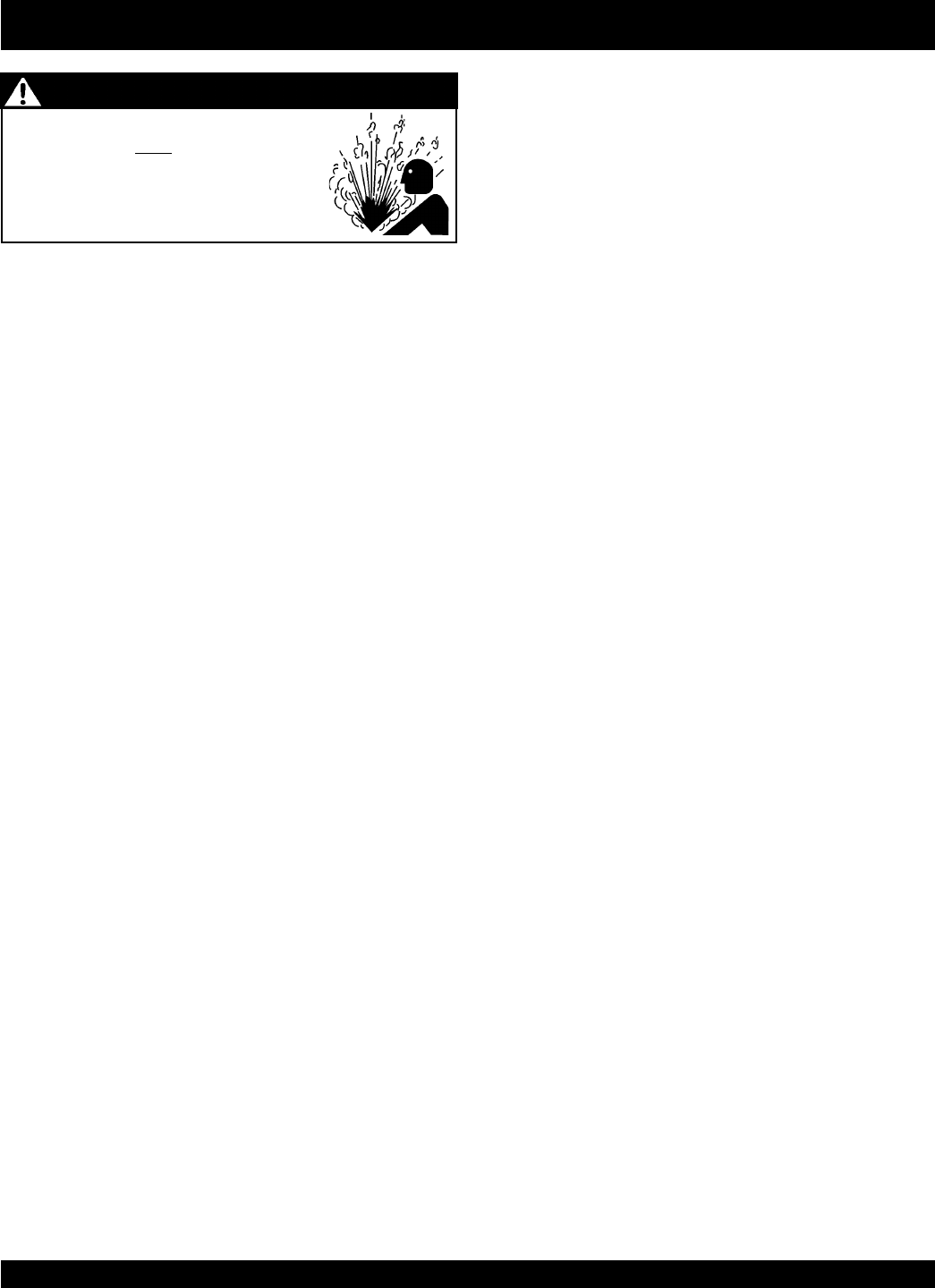
PAGE 46 — DCA-300SSK SERIES — PARTS AND OPERATION MANUAL (STD) — REV. #4 (03/27/06)
DCA-300SSK SERIES — MAINTENANCE
DCA-300SSK SERIES — MAINTENANCE
Flushing Out Radiator and Changing Coolant
1. Stop the engine and allow to cool. Tighten valve of the
corrosion resistor (if equipped).
2. Turn water filer cap slowly and remove it.
3. Prepare a container to catch the coolant, then open drain
plug of the radiator or heat exchanger and drain plug of
the engine, and drain the coolant.
4. After draining the coolant, close drain plugs and fill with
tap water.
5. When the water level is near the mouth of the water
filler, open drain plugs and start the engine, and run at
low idling. Keep the engine running at low idling and
flush the radiator for about 10 minutes.
6. Adjust the flow of the water flowing in and draining out to
ensure that the radiator is always full during the flushing
operation. While flushing water through the system,
watch carefully the water inlet hose does not come out
of the radiator filler port.
7. After flushing, stop the engine, open drain plug and drain
the water, then close drain plugs.
8. After draining the water, flush the system with a flushing
agent. See instructions on flushing agent label.
9. After flushing, open drain plugs and drain out all the
water, then close drain plugs and add tap water so the
water level is near the mouth of the water filler.
10. When the water level is near the mouth of the water
filler, open drain plugs and start the engine, run at low
idling and continue to flush the system until clean water
comes out. Adjust the flow of the water flowing in and
draining out to ensure the radiator is always full during
the flushing operation.
11. When clean water comes out, stop the engine, drain all
the water, then close drain plugs.
12. Remove the corrosion resistor (if equipped) and open
valve.
13. Supply water until it flows over the water filler.
14. Drain the water inside reserve tank, clean the inside of
the reserve tank, then fill with coolant/water mixture to
between the full and low lines.
15. Stop the engine, wait for 3 minutes, add tap water until
the water level reaches near the water filer port, then
tighten the radiator cap.
Changing Oil
1. Make sure the oil is cool before changing.
2. Set a container directly under the drain plug of the oil
pan. Loosen the drain plug slowly.
3. Check the drained oil for excessive metal particles or
foreign material. Contact the distributor if there is metal
particles or foreign material.
4. Using a filter wrench, turn filter cartridge to the left to
remove it. If the filter cartridge is filled with a large
amount of oil, wait 10 minutes or so before removing.
Make sure there is no old gasket stuck on the filter holder.
5. Tighten drain plug. Clean the filter holder, fill the new
filter cartridge with clean engine oil, coat the packing
and thread of the new filter cartridge with engine oil,
then install it to the filter holder. Tighten until the gasket
surface contacts the seal surface of the filter holder,
then tighten it a further 3/4 to 1 turn.
6. Add engine oil through oil filler until the oil level is between
the H and L marks on the dipstick.
7. Run the engine at idling for a short time, then stop the
engine. Recheck the oil level and fill as necessary.
Replacing Fuel Filter
1. Set the container under the filter cartridge to catch fuel.
2. Using a filter wrench, turn the filter cartridge to the left
to remove it.
3. Clean the filter holder, fill the new filter cartridge with
fuel, coat the packing surface of the filter cartridge with
engine oil, then install the cartridge to the filter holder.
4. When installing, tighten until the packing surface
contacts the seal surface of the filter holder then tighten
a further 2/3 of a turn. If the filter cartridge is tighten too
much, the packing will be damaged and will cause fuel
leakage. Fuel leakage will occur if the filter cartridge is
not tightened enough. Always tighten to the correct
angle.
Allow engine to
cool
when flushing out
radiator. Flushing the radiator while hot
could cause serious burns from water or
steam.
WARNING - BURN HAZARDS



